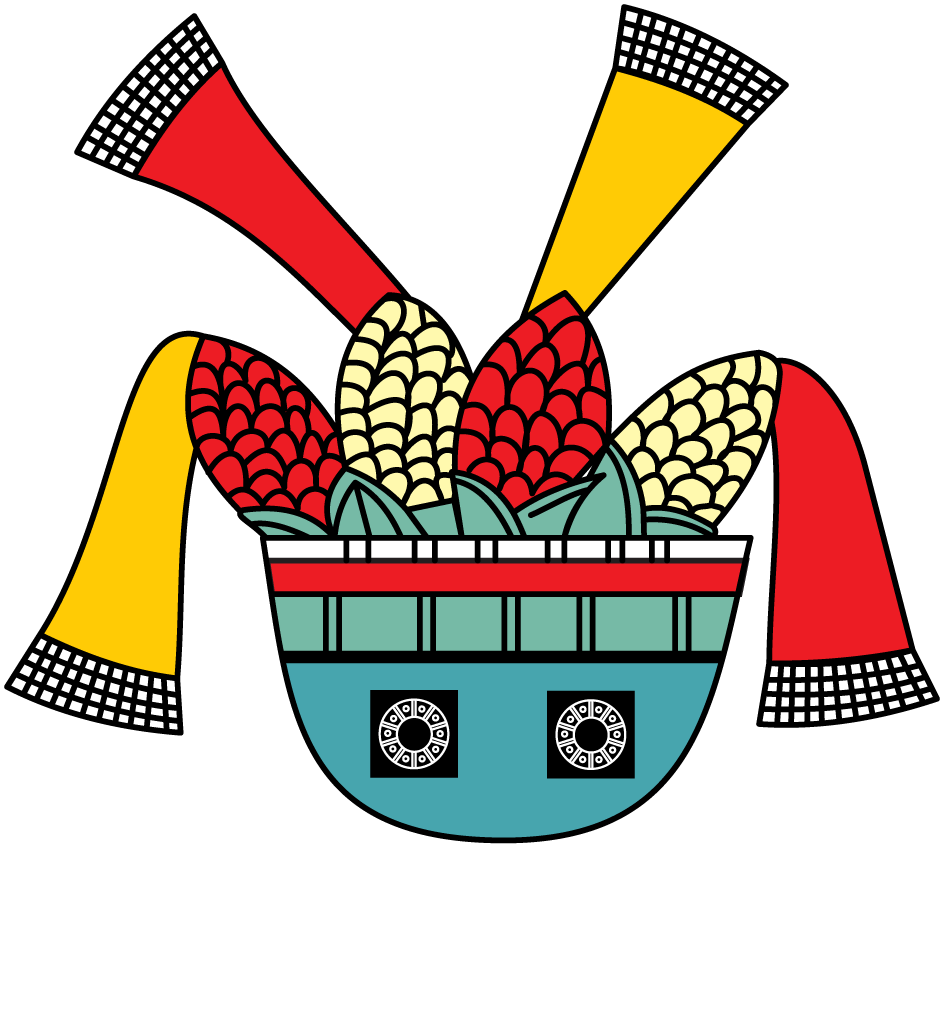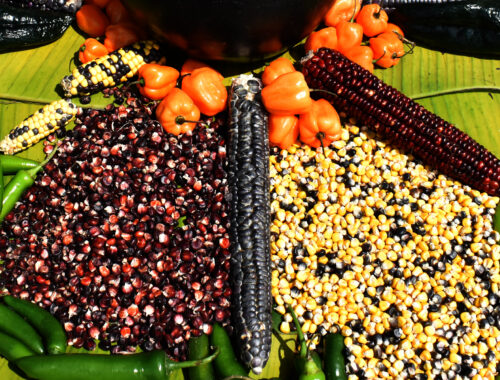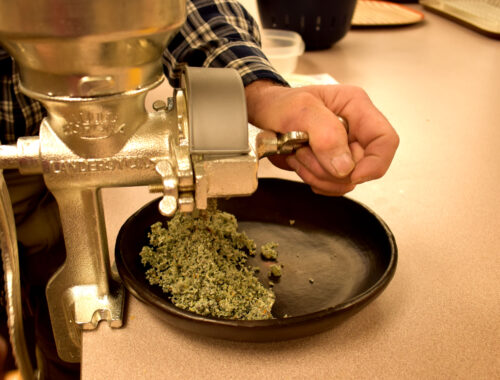Blog
Tamales de frijol y tamales de anís para los muertitos
La tradición de Día de muertos se vive año con año en los primeros días de noviembre en México y algunos países de centro américa. Cada familia recuerda y abraza a sus seres queridos, que vienen del lugar del reposo a pasar un rato junto a los vivos. Las costumbres varían según el lugar, pero nunca falta el aroma y color de las flores de cempasúchil, las velas, los altares y ofrendas con alimentos y bebidas favoritas de los difuntos, el pan de muerto y el papel picado. Los panteones se visten de color y música mientras los vivos se acercan a convivir con los muertos, a ofrecerles una canción o un taquito.
Desde tiempos antes de la colonia, los tamales con diversos rellenos han formado parte de la ofrenda de muertos. En esta ocasión colaboramos con la ofrenda de la casa, ayudando en la preparación de los tamales de frijol y de anís para acompañar el delicioso pipián que le encantaba en vida a mi suegro. Ambos son tamales muy sencillos, que junto a los sabores de platillos elaborados como el pipián o el mole se complementan de maravilla. Estos tamales son especiales porque a diferencia de otros que se preparan a partir de un polvo de maíz cernido, se elaboran con masa de maíz recién molida en el molino. La masa se mezcla con manteca de cerdo (o manteca vegetal) y sal. Luego se separa en dos tantos para hacer los tamalitos de frijol y los de anís. Nosotros ocupamos 1 kilo de masa, ¼ kg de manteca de cerdo y sal al gusto. Con esta mezcla nos salieron 33 tamales pequeños.
Para estos tamales es indispensable el metate, donde se muelen las hojas frescas de aguacate pasadas por el comal y los frijoles negros del día para unos, así como el anís para los otros.
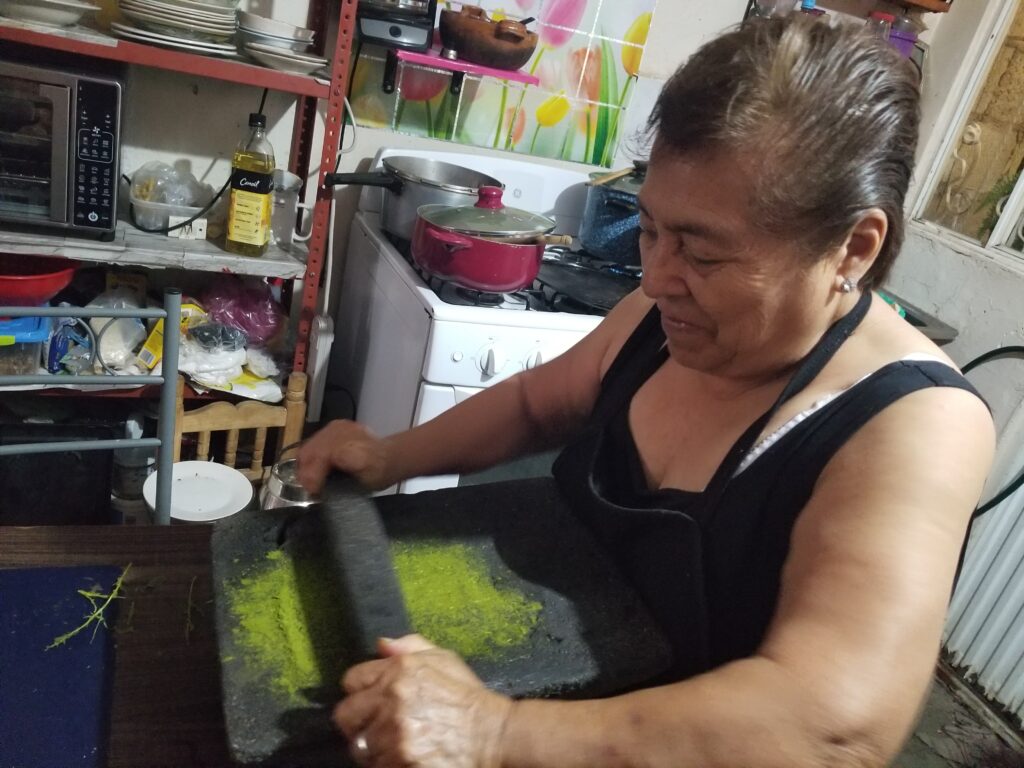
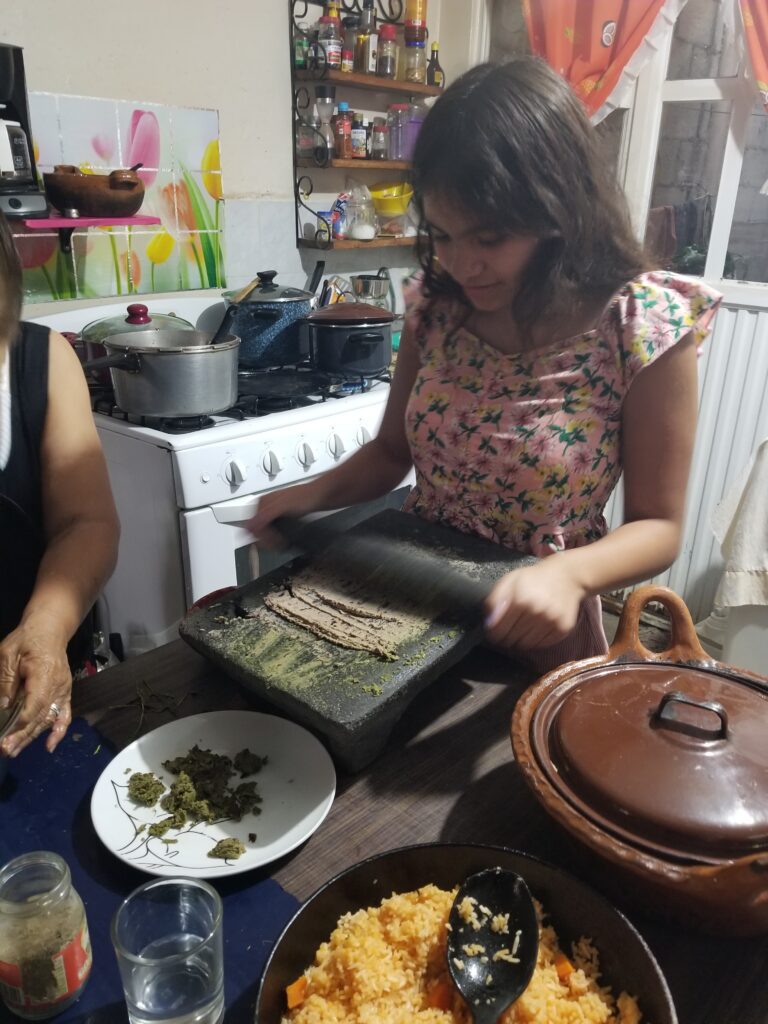
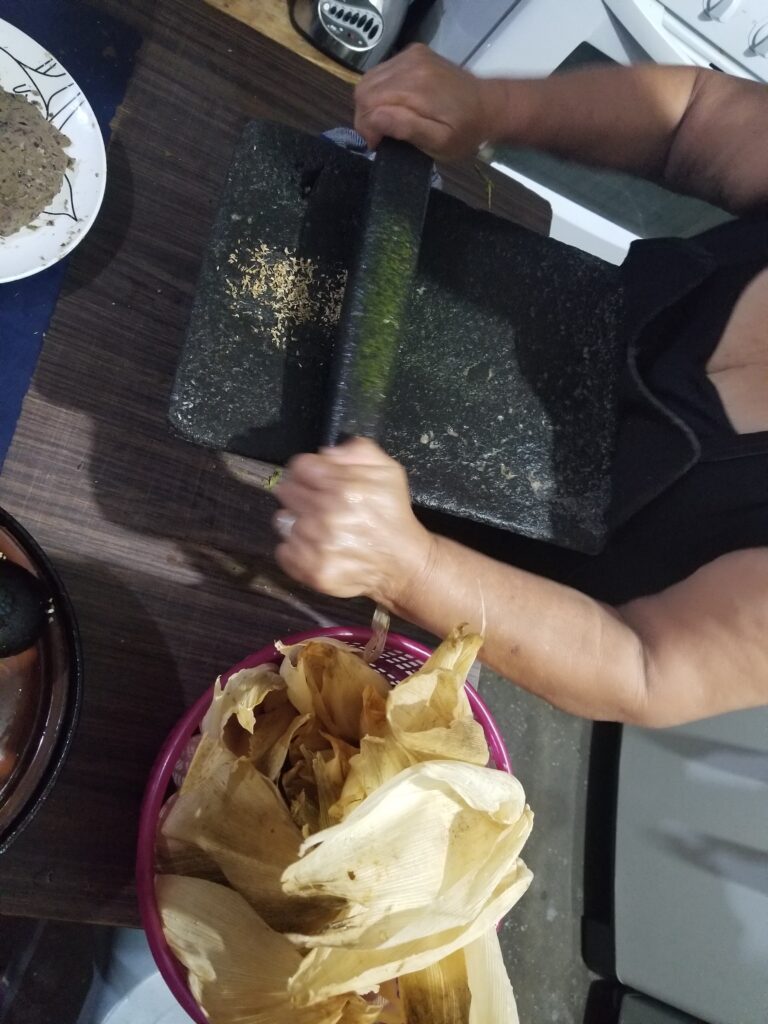
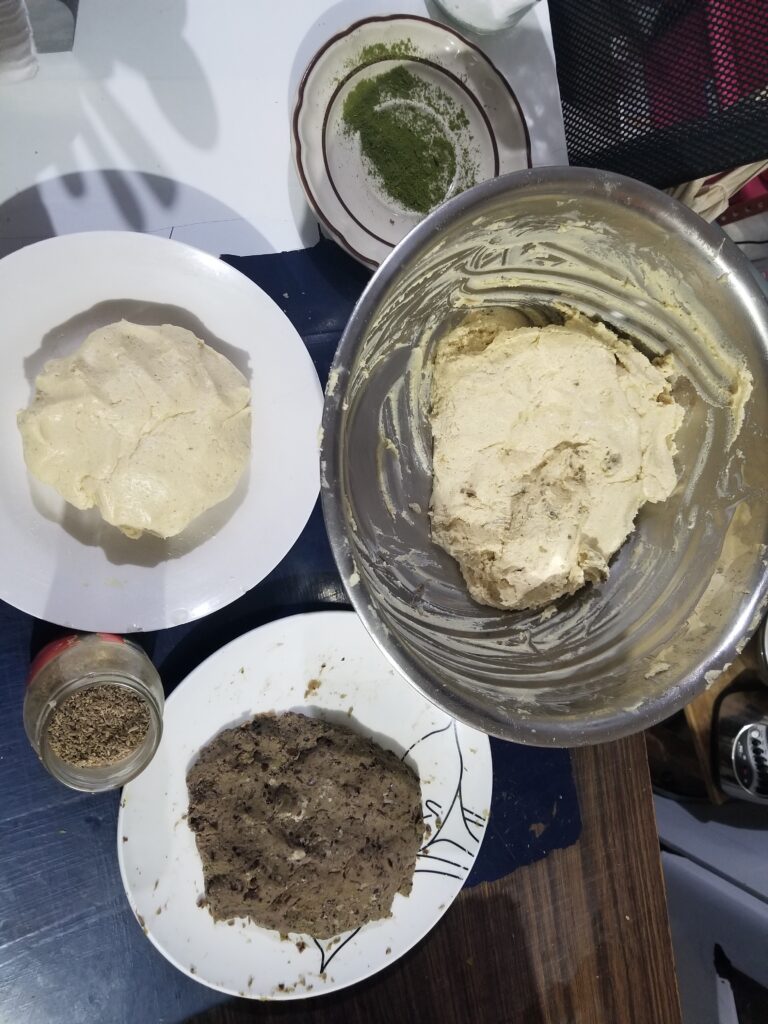
Para los tamalitos de frijol: Se mezcla la hoja de aguacate molida con el frijol molido. Se extiende la masa de maíz sobre el metate o sobre sobre la mesa, encima de un papel encerado. Se embarra el frijol molido encima de la masa, y se enrolla sobre sí misma hasta tener un rollo de masa con frijol adentro. Una vez formado el rollo, se toman porciones con la mano y se colocan adentro de la hoja de maíz o totomoztle, previamente lavada. Los tamalitos de frijol se envuelven de una forma muy particular: Se toma el extremo del tamal donde van las puntas del totomoztle y se enrollan, como envolviendo un dulce, luego ese mismo rollito se inserta adentro del extremo del tamal, dejándolo con su apariencia tradicional.
Para los tamalitos de anís: Se mezcla la masa preparada con el anís molido. Se toma una hoja de totomoztle previamente lavada, y se le embarra una pequeña porción de masa. Estos tamalitos se envuelven diferente a los de frijol: se doblan los lados del totomoztle hacia dentro, y luego la punta sobre los bordes, terminando con un tamalito de forma rectangular.
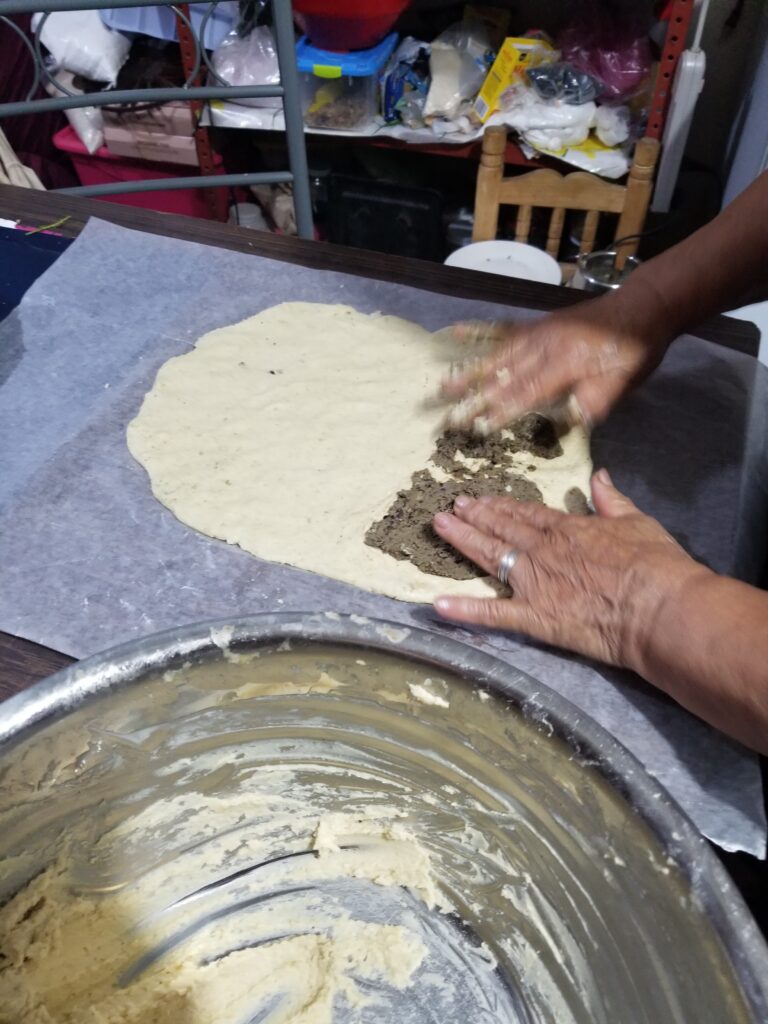
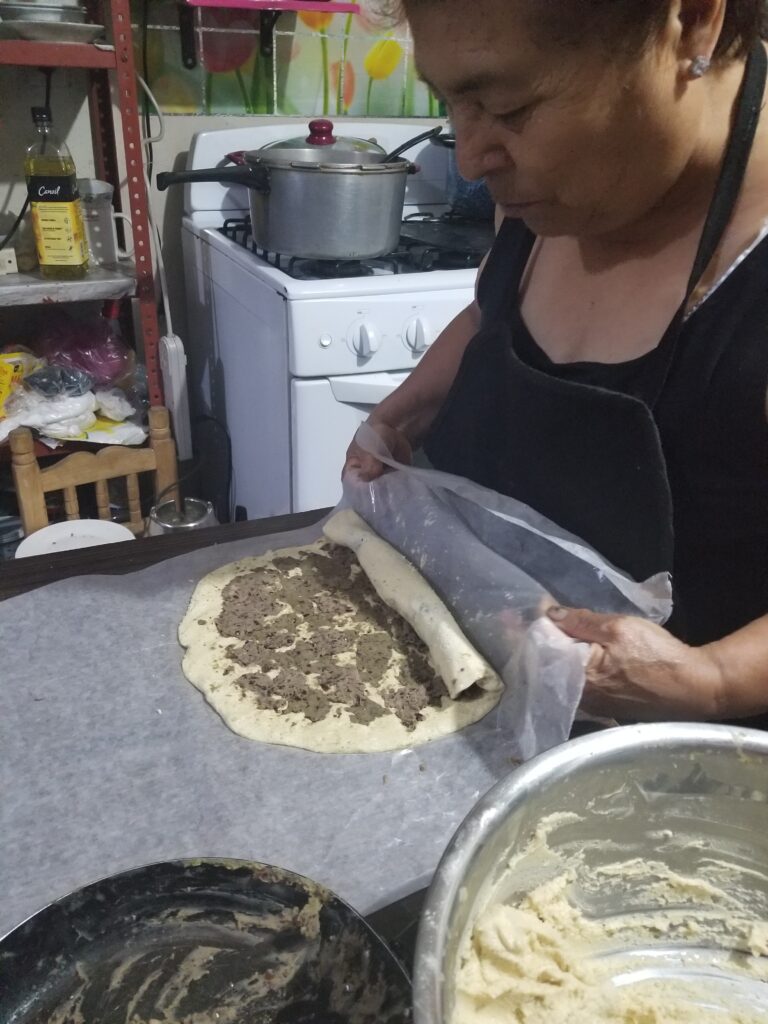
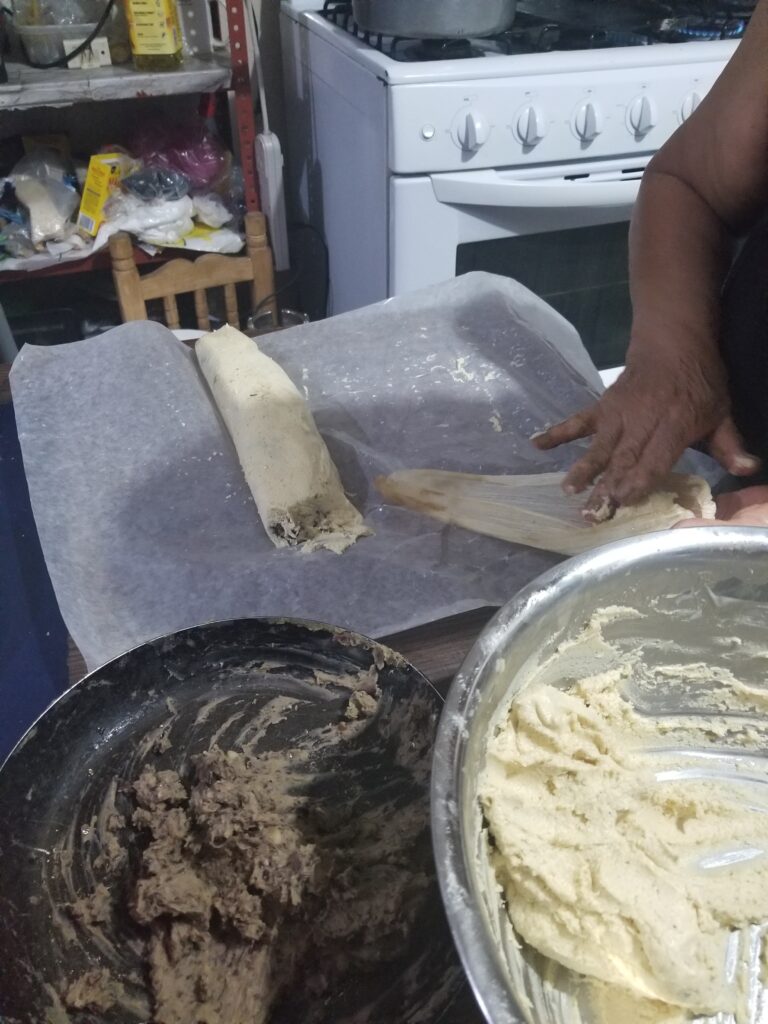
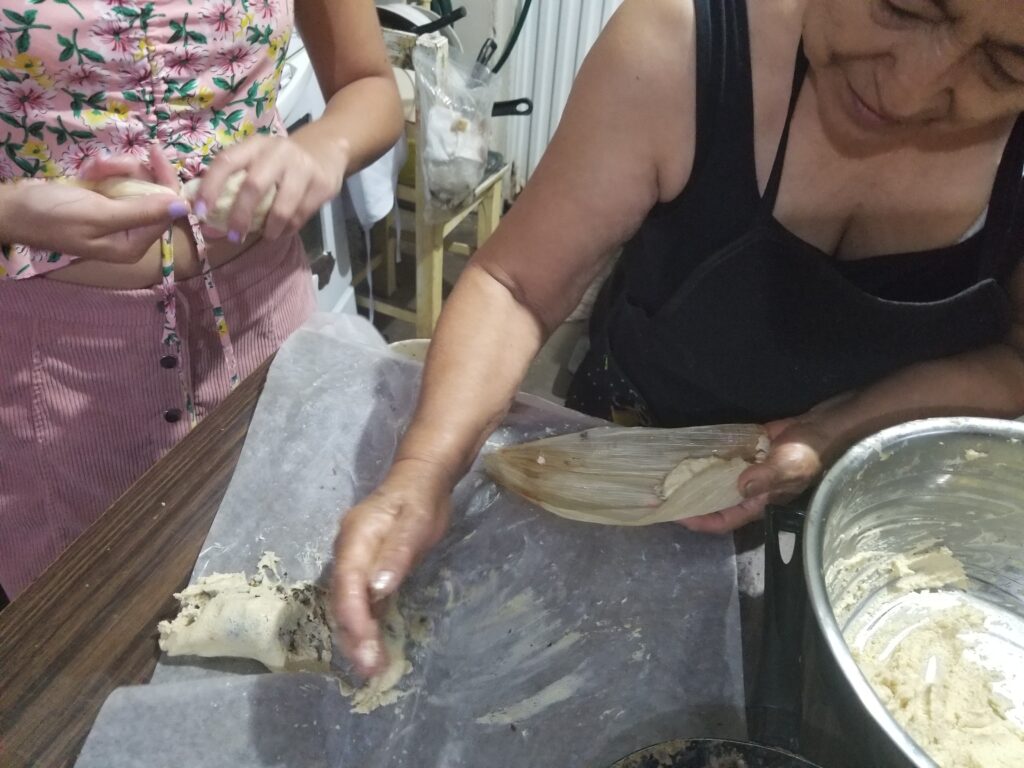
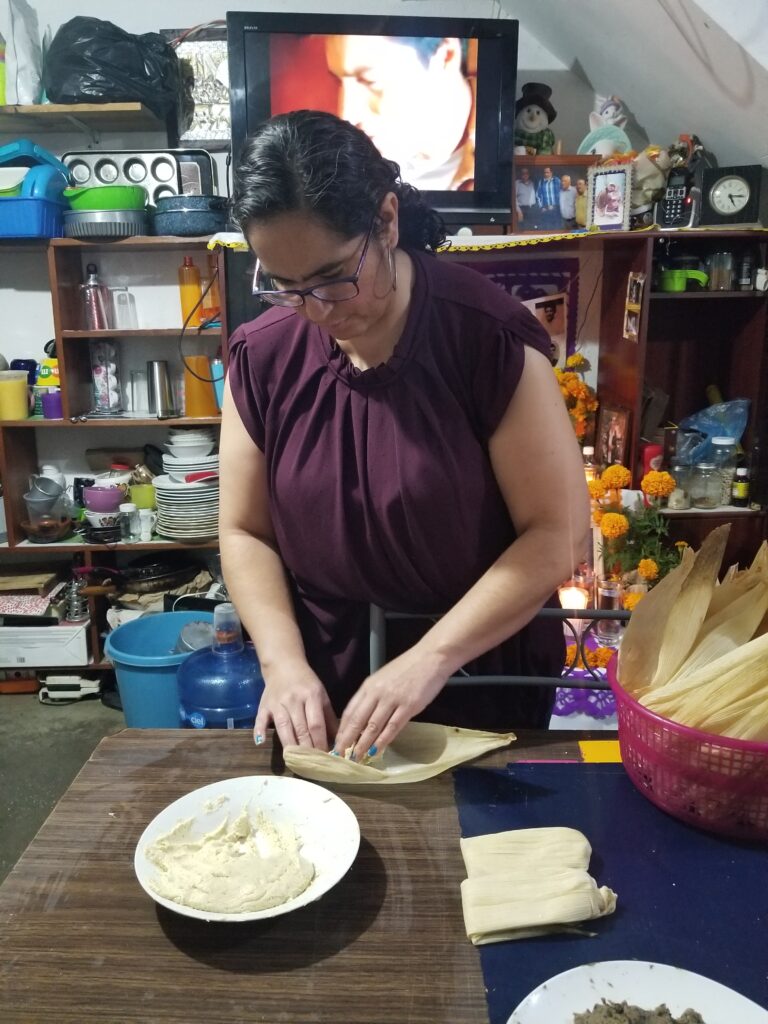
Finalmente se coloca agua en una vaporera y se pone una cama de totomoztle en tiritas, donde luego se acomodan los tamales para su cocción. Los tamalitos de anís se cocieron en una hora y los de frijol en una hora y cuarto. La forma de saber que están cocidos es abrir uno, si el tamal formado se desprende completo de la hoja, quiere decir que está listo.
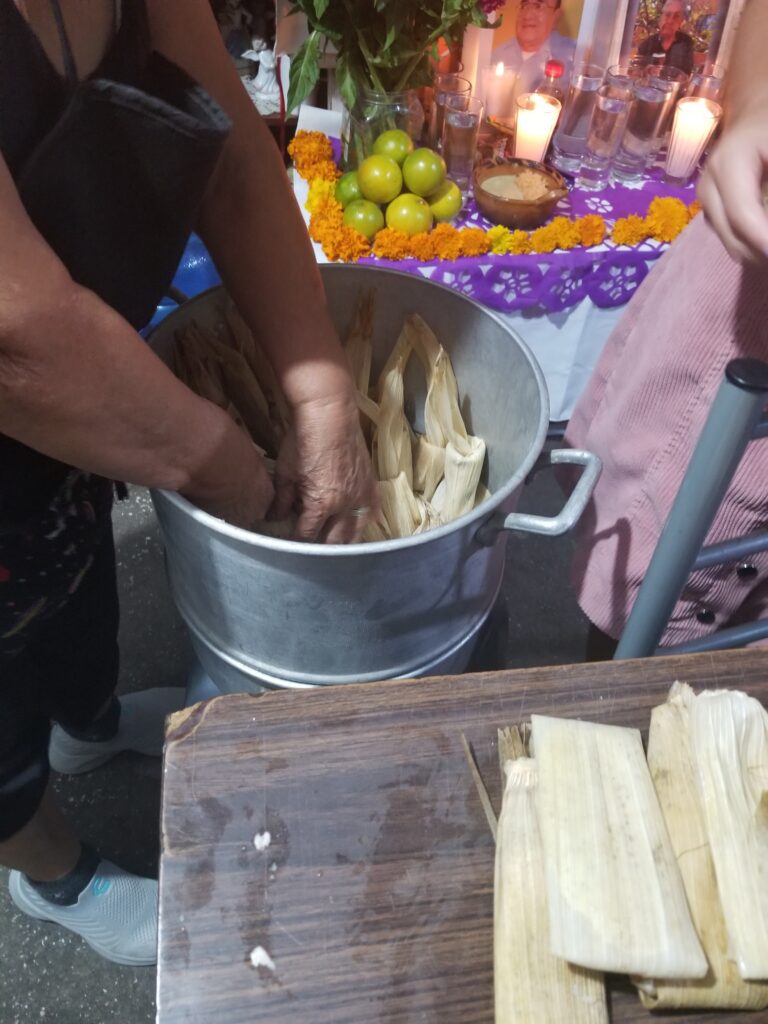
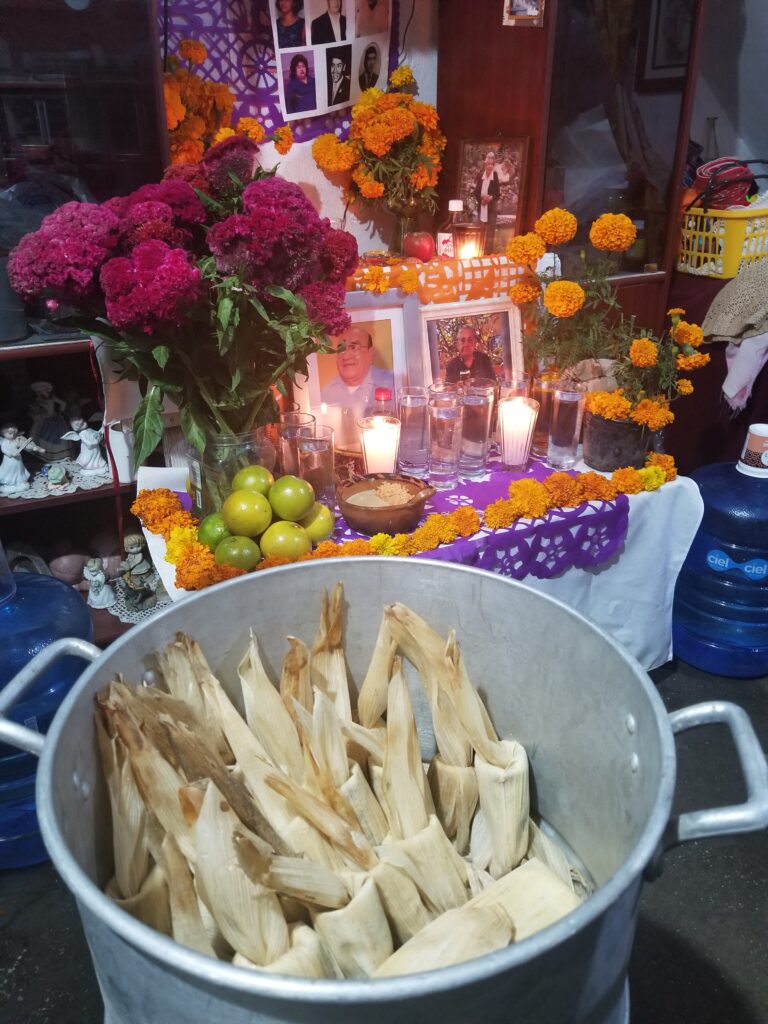
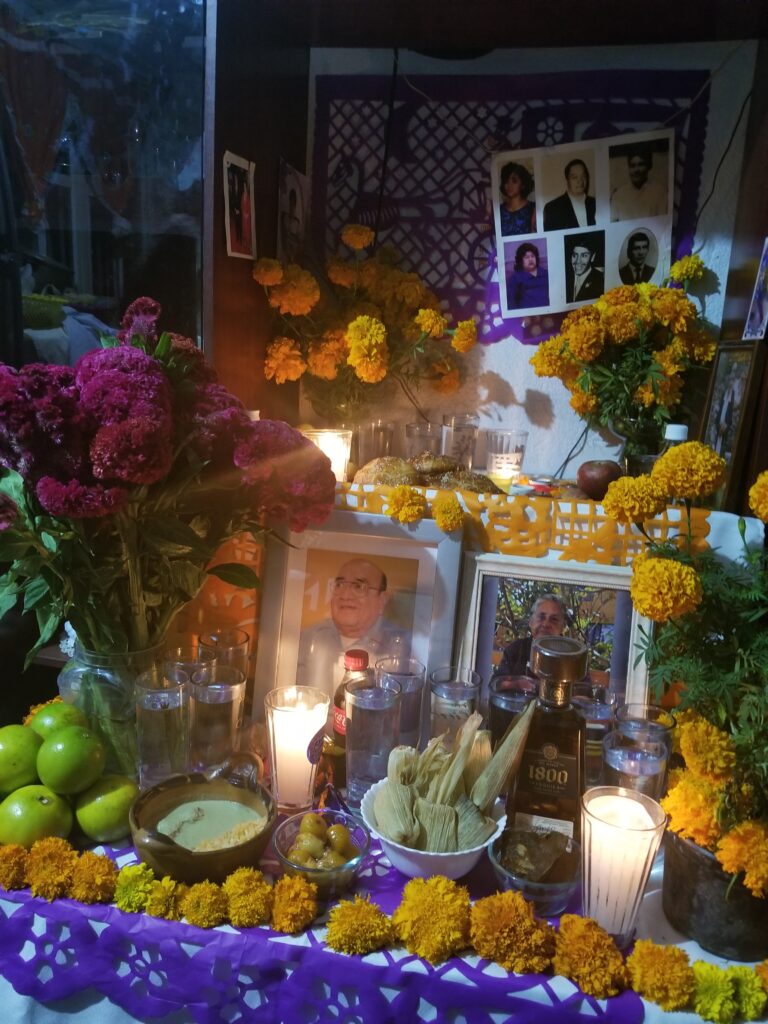
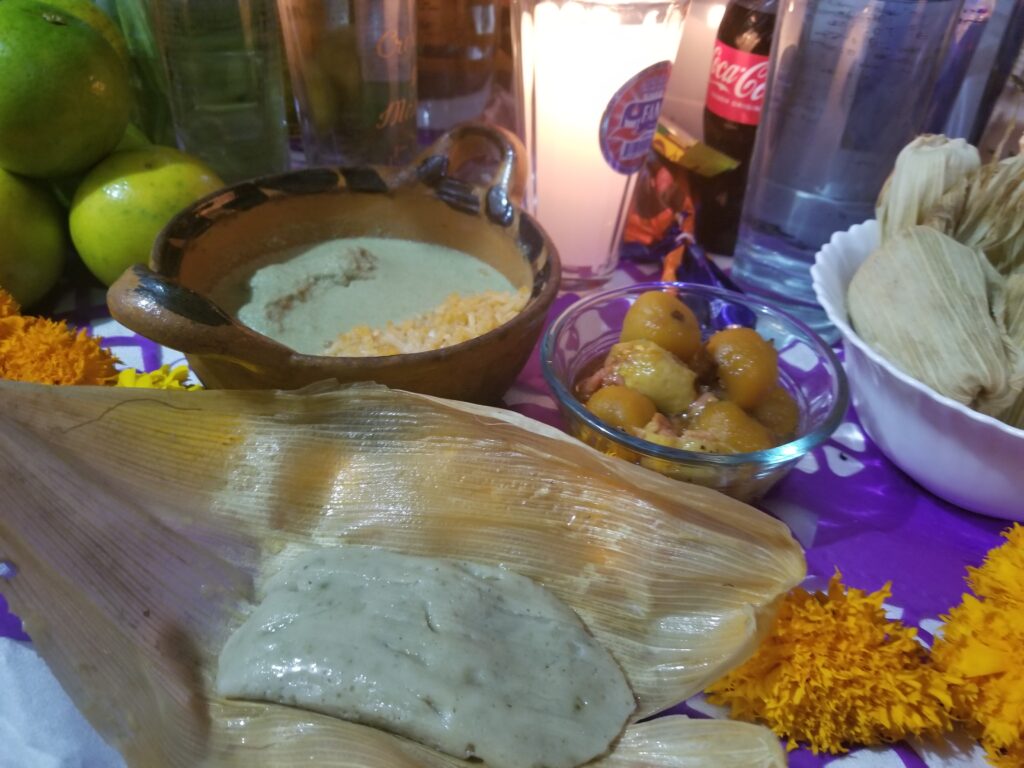
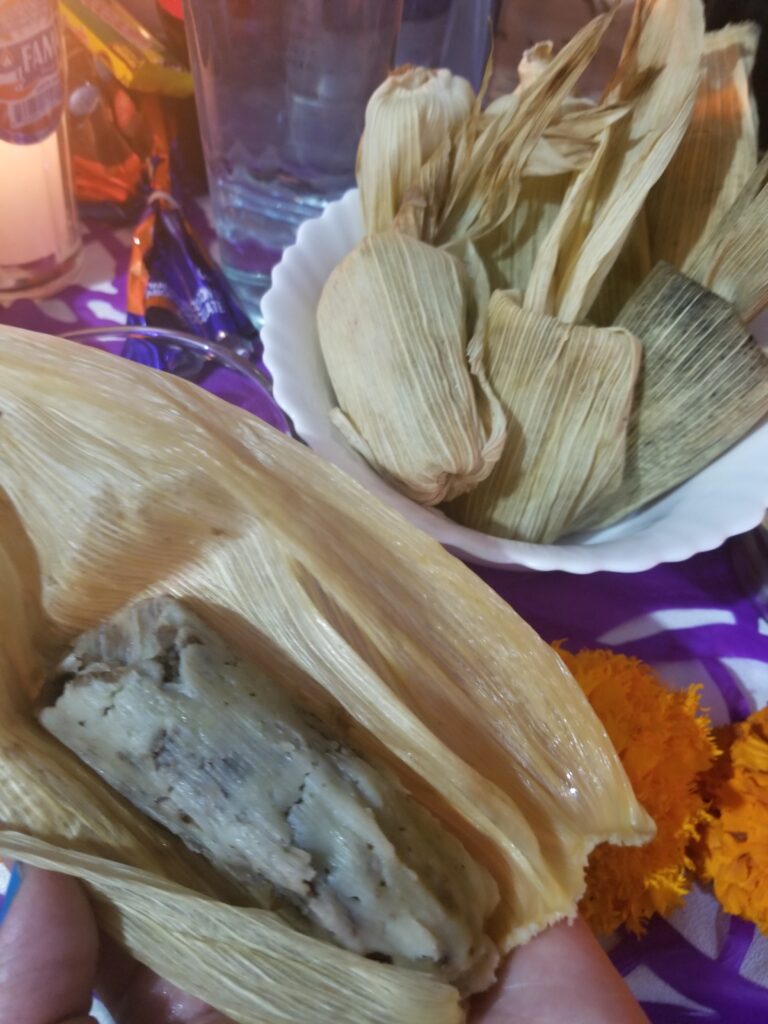
Por supuesto que probamos los tamalitos para asegurarnos que fueran del agrado de los difuntos, pero en cuanto se enfriaron un poco, los colocamos en la ofrenda junto al pipián, los tejocotes y el dulce de calabaza. Hacemos esto con mucho amor y alegría, con la certeza de que nuestros muertitos están bien atendidos durante su visita, y siempre vivos en nuestros corazones.

